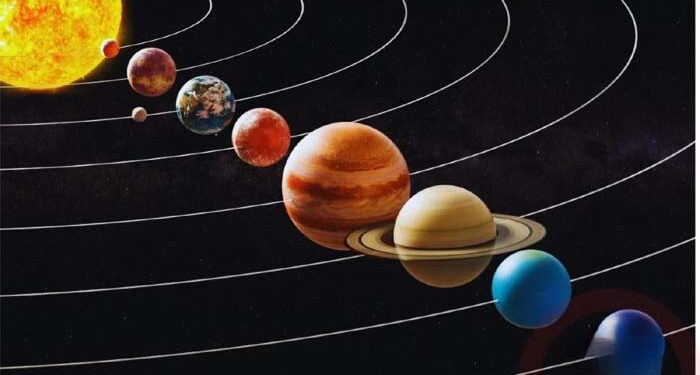- On this occasion, Mercury, Venus, Mars, Jupiter, and Saturn will align in a graceful celestial arc, providing a breathtaking view
- Gujarat Council on Science and Technology (GUJCOST) will organize public observation programs for rare astronomical phenomenon
- Astronomy workshops, exhibitions, and public observation events to be held at Gujarat Science City and Regional Science Centers
NE SCIENCE & TECHNOLOGY BUREAU
GANDHINAGAR, JAN 24
To inspire interest in science, particularly among the youth and students of Gujarat, the then Chief Minister of Gujarat and the current Prime Minister Narendra Modi established a dedicated Science and Technology Department in the state. Under the leadership of Chief Minister Bhupendra Patel, the department continues its efforts to cultivate a scientific mindset, while also keeping the general public informed about significant scientific events.
On January 24 and 25, 2025, a rare and significant astronomical event will take place in the night sky of Gujarat, as five of the eight planets orbiting the Sun align in a planetary parade. To offer the public an opportunity to witness this remarkable phenomenon, the Gujarat Council on Science and Technology (GUJCOST), under the Department of Science and Technology of Gujarat, has organized a series of public observation programs. These events will be held in collaboration with Gujarat Science City, Regional Science Centers (RSCs), and Community Science Centers (CSCs) across the state.
Scientific significance of the Planetary Parade
A planetary parade occurs when multiple planets align along the same region of the sky, visible from Earth. On this occasion, Mercury, Venus, Mars, Jupiter, and Saturn will align in a graceful celestial arc, providing a breathtaking view. This alignment is a visual phenomenon created by the relative positions of the planets in their orbits around the Sun. Such alignments, while not rare, are significant for their educational and scientific value. They offer a unique opportunity to observe and learn about planetary motion, the ecliptic plane, and the vastness of our solar system. This event fosters public interest in astronomy and encourages scientific curiosity among students and enthusiasts. The Planetary Parade is a reflection of the wonders of our universe. By organizing observation programs, we aim to ignite the spark of curiosity among the youth and the general public, enhancing their understanding of celestial mechanics and the cosmos.
Programs across Gujarat
- GUJCOST has made extensive arrangements to ensure that people from all walks of life can enjoy this celestial event:
- Gujarat Science City, Ahmedabad: Live telescopic observations, expert talks.
- Regional Science Centers (Bhavnagar, Bhuj, Patan, and Rajkot): Guided night-sky observation sessions, interactive astronomy workshops, and special exhibits.
- Community Science Centers: Hands-on activities and demonstrations to explain the science behind planetary motion and celestial alignments.
- The programs are designed to engage students, teachers, and the general public in understanding the scientific principles behind the planetary parade while fostering a sense of wonder about our universe.
Observation Tips
– Timing: The best time to observe the parade is between 7:00 pm and 10:00 pm on both nights, weather permitting.
– Location: Find a dark and clear sky away from city lights for the best view.
– Binoculars/Telescopes: While the planets can be seen with the naked eye, a pair of binoculars or a small telescope can enhance the viewing experience, especially for details like Jupiter’s moons or Saturn’s rings.
– Direction: Look towards the western horizon after sunset for Mercury and Venus, while Mars, Jupiter, and Saturn will be visible higher in the night sky.
– Sky Apps: Use mobile astronomy apps to identify the planets and their positions.
This is a once-in-a-lifetime opportunity to witness a grand astronomical event and connect with the cosmos. GUJCOST invites everyone to participate in the observation programs and discover the marvels of our solar system.












